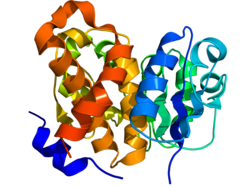| NAXD | |||||||||||||||||||||||||||||||||||||||||||||||||||
|---|---|---|---|---|---|---|---|---|---|---|---|---|---|---|---|---|---|---|---|---|---|---|---|---|---|---|---|---|---|---|---|---|---|---|---|---|---|---|---|---|---|---|---|---|---|---|---|---|---|---|---|
| Identifiers | |||||||||||||||||||||||||||||||||||||||||||||||||||
| Aliases | NAXD , LP3298, CARKD, NAD(P)HX dehydratase, PEBEL2 | ||||||||||||||||||||||||||||||||||||||||||||||||||
| External IDs | OMIM: 615910; MGI: 1913353; HomoloGene: 6333; GeneCards: NAXD; OMA:NAXD - orthologs | ||||||||||||||||||||||||||||||||||||||||||||||||||
| |||||||||||||||||||||||||||||||||||||||||||||||||||
| |||||||||||||||||||||||||||||||||||||||||||||||||||
| |||||||||||||||||||||||||||||||||||||||||||||||||||
| |||||||||||||||||||||||||||||||||||||||||||||||||||
| |||||||||||||||||||||||||||||||||||||||||||||||||||
| Wikidata | |||||||||||||||||||||||||||||||||||||||||||||||||||
| |||||||||||||||||||||||||||||||||||||||||||||||||||
| Carbohydrate kinase | |||||||||||
|---|---|---|---|---|---|---|---|---|---|---|---|
 Crystallographic structure of a putative Bacillus subtilis carbohydrate kinase (rainbow colored, N-terminus = blue, C-terminus = red). [5] | |||||||||||
| Identifiers | |||||||||||
| Symbol | Carb_kinase | ||||||||||
| Pfam | PF01256 | ||||||||||
| Pfam clan | CL0118 | ||||||||||
| InterPro | IPR000631 | ||||||||||
| PROSITE | PDOC00806 | ||||||||||
| SCOP2 | 1kyh / SCOPe / SUPFAM | ||||||||||
| |||||||||||
Carbohydrate kinase domain containing protein (abbreviated as CARKD), encoded by CARKD gene, is a human protein of unknown function. The CARKD gene encodes proteins with a predicted mitochondrial propeptide (mCARKD), a signal peptide (spCARKD) or neither of them (cCARKD). Confocal microscopy analysis of transfected CHO (Chinese-hamster ovary) cells indicated that cCARKD remains in the cytosol, whereas mCARKD and spCARKD are targeted to the mitochondria and the endoplasmic reticulum respectively. [6] The protein is conserved throughout many species, and has predicted orthologs through eukaryotes, bacteria, and archea.



